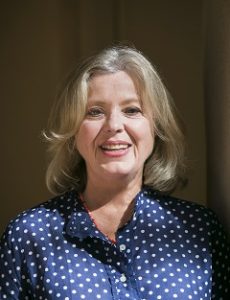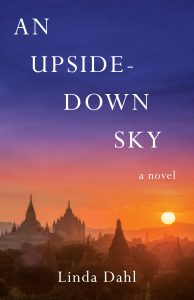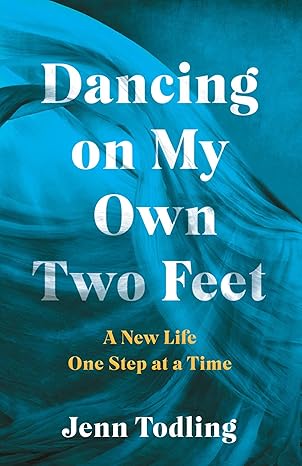Why I Wanted to Write An Upside-Down Sky
Linda Dahl ‘s riveting travel novel invites readers to challenge assumptions, discover their true selves, and broaden their horizons… AN UPSIDE-DOWN SKY (April 19, She Writes Press) follows Lidia, a blocked artist in her 60s, who goes on a tour to Namyan (a fictional country partially based on Myanmar/Burma) once it opens after a long dictatorship. Not only does she get much more than the vacation she signed up for, but she encounters countless adventures, truly learns about the local culture, and finds steps toward a new freedom along the way.
Why I wanted to write An Upside-Down Sky
By Linda Dahl
 After I visited Burma, a.k.a. Myanmar, with a small group tour in 2015, I couldn’t get it out of my mind. Closed off to the world for decades until a fragile democracy had finally emerged, it was an ancient, stunning country with a rich Buddhist heritage. And I found many contradictions, a gentle, agrarian people, with one of the world’s most brutal military organizations that continued to viciously suppress ethnic minorities. On the one hand, you couldn’t turn around without bumping into yet another exquisite Buddhist pagoda, but Burma was also a major drug and gun trafficker.
After I visited Burma, a.k.a. Myanmar, with a small group tour in 2015, I couldn’t get it out of my mind. Closed off to the world for decades until a fragile democracy had finally emerged, it was an ancient, stunning country with a rich Buddhist heritage. And I found many contradictions, a gentle, agrarian people, with one of the world’s most brutal military organizations that continued to viciously suppress ethnic minorities. On the one hand, you couldn’t turn around without bumping into yet another exquisite Buddhist pagoda, but Burma was also a major drug and gun trafficker.
Having begun my writing career as a travel journalist, along the way I had collected a raft of characters, some who travel to check a country off their list, others who have a specific reason to go somewhere, usually relatives or a hobby, and some who just want a vacation. But there is another kind of traveler, there to learn and try to understand ways of life so different from their own.
I envisioned the plot weaving together the disparate stories of a group of Americans against a backdrop of stunning temples and landscapes. With Buddhas – serene Buddhas, gold Buddhas, reclining, laughing, stern, enigmatic, small and gigantic Buddhas. And tucked nearby, little altars with other intriguingly gender-fluid, even more ancient deities. On the streets were monks in red robes, nuns in pink – and lots of children – wandering with their begging bowls among throngs of street vendors. Many of these were selling the widely used, mildly narcotic betel nut that stains teeth red. But sometimes, the underfed laborers preferred another brand of betel nut laced with amphetamines and called, simply, “crazy.” Caveat emptor. I made this country fictional, calling it Namyan, to free myself from fluffing the intricacies of Burmese culture and politics.
The 18 Americans on this tour are a varied lot: married, single, gay, straight, progressive, conservative, mostly middle-aged or older, but several who are younger. They include people of color – Black, Asian, Latinx. Middle-class, not famous. People with the usual concerns. I wanted to write about how mostly everyday people respond to the extraordinary. As they climbed aboard the air-conditioned tour bus, mounted a pagoda’s flights of stairs in bare feet, a strict rule in Burma/Namyan, had accidents, became unwell, formed new friendships, had affairs, argued, got tipsy and even into serious trouble, I felt as though I was along for the ride with them.
The protagonist, Lidia, soon pushed her way forward, a Mexican-Irish-American artist in her early 60’s, a disheartened woman who carries a secret sorrow. Her friends, Catty and Lars, bohemian Wasps who have persuaded her to come with them on this trip for a much-needed break, came next. And the rest materialized, some quickly, some slowly. Some were wholly fictional, several were inspired by people I’ve known.
Haynes, a Black, German-born extreme political travel vlogger along on the tour to do preliminary research about the distant areas of the country engulfed in civil war. Mrs. Hills, the headmistress of a school in Hong Kong for many years, where she met her wife and they became enchanted with Asia. She is in her late 80’s, indomitably set on a last hurrah. Clint Hodges, a retired oilman, a curmudgeon and lover of mountains who is secretly dying of melanoma. Tammy “Buttons” Steinman, a woman who wears caps festooned with mementos of many trips – hence the nickname – but for a private and poignant reason. Anchoring the disparate group is Thila, their Namyanese guide, a woman in her early 30’s whose family suffered loss, along with millions of others, during the decades of the dictatorship, who never had the most basic freedom until just a few years before. Thila knows she is lucky to have her job, but she’s hungry to know the world beyond Namyan’s borders. Meanwhile, oh what a job she will have with her charges.
An Upside-Down Sky is my ninth published book so I knew what the commitment to writing it would entail, those times when a scene wouldn’t work or the dialogue remained wooden, the times when I doubted myself for ever taking the book on, but also the wonderful, if rarer times, when the writing flowed and I felt inside the story.
Then came the rewrites. It was a comfort to know I wasn’t the only writer who works without a net, a.k.a. outline, when I came across an interview with the gifted writer Michael Ondaatje, author of The English Patient and many other novels. There he said that he tends not to know beforehand what the plot is or the story is or even the theme. “Those things come later, for me,” he says.
The book begins. As they arrive in the capital, Gonyang, they set out to wander around the old part of the city, a crumbling relic of British empire days. Mischief, misunderstanding, comic relief follow. They will travel then through this beautiful country, meeting predicaments, making discoveries. Until, in the last chapter, there is a surprising denouement – for Lidia, it is the catalyst she needs to take steps toward a new freedom.
—
Linda Dahl began her career as a travel journalist and college teacher before turning to writing full time. An award-winning author, she has written groundbreaking books about women in jazz and women’s needs in recovery from addiction, as well as five works of fiction. She is currently at work on a screenplay and a new novel. She has two children, a cat, and too many plants. She lives in Riverdale in New York City.
—
 When Lidia, a blocked Latinx artist in her sixties, goes on a group tour of Namyan, a fictional Southeast Asian country reopened to the world after a long dictatorship, she gets much more than the vacation she thinks she’s signed on for. Against a backdrop of pagodas and enigmatic customs, she and the disparate crew of eighteen Americans on the tour encounter one adventure after another—experiences that challenge their assumptions about their host country’s placid surface of beautiful pagodas and wandering Buddhist monks. Along the way, Lidia finds companionship and sexual pleasure with Haynes, a Black man seeking adventure—even danger—in Namyan. On a nighttime excursion among mysterious ancient buildings, they watch the nighttime sky. Lidia remarks that the stars look upside down – a metaphor for Namyan as a foreign place and for her. She enjoys being with Haynes but is conflicted. The final chapter reveals a secret, the source of her conflict, and her steps towards a new freedom.
When Lidia, a blocked Latinx artist in her sixties, goes on a group tour of Namyan, a fictional Southeast Asian country reopened to the world after a long dictatorship, she gets much more than the vacation she thinks she’s signed on for. Against a backdrop of pagodas and enigmatic customs, she and the disparate crew of eighteen Americans on the tour encounter one adventure after another—experiences that challenge their assumptions about their host country’s placid surface of beautiful pagodas and wandering Buddhist monks. Along the way, Lidia finds companionship and sexual pleasure with Haynes, a Black man seeking adventure—even danger—in Namyan. On a nighttime excursion among mysterious ancient buildings, they watch the nighttime sky. Lidia remarks that the stars look upside down – a metaphor for Namyan as a foreign place and for her. She enjoys being with Haynes but is conflicted. The final chapter reveals a secret, the source of her conflict, and her steps towards a new freedom.
An Upside-Down Sky’s cast of characters, including their Namyanese guide, mirrors America: straight, gay, gender-fluid, black, brown, white, progressive, conservative, artistic, repressed, old, young. Some of them accept Nanyam’s charming façade at face value, while others seek to understand the country’s brutal repression by the military and ongoing ethnic conflicts. And most, resistant as they might be to change, are transformed by their time there.
Category: How To and Tips, On Writing




























